A Quick Start Guide to The Keto Low-Carb Diet
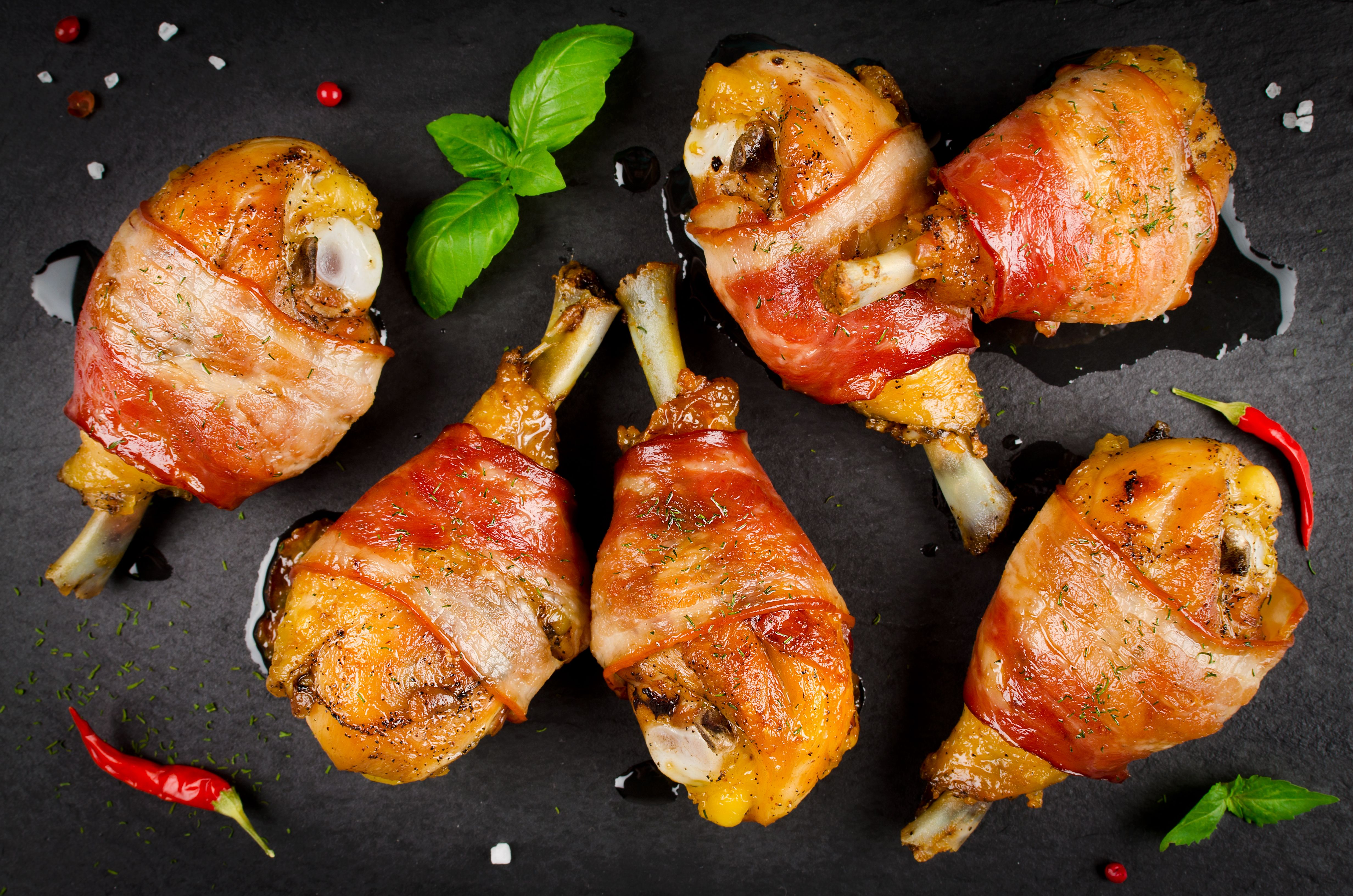
First, I’m not a doctor, and this isn’t medical advice. You should consult with your doctor before starting any diet or exercise program.
This is just what has worked for me and information that I have gathered over the year or more that have led to losing over 100 lbs in that period.
I had been overweight pretty much my entire adult life and really thought that I was going to live my shortened life as a morbidly obese person.
I had tried dozens of diets over the years. All worked to get some initial weight off but eventually that weight loss would stall or the cravings would become too intense, and the diet would end.
I decided to give weight loss another try, but this time I was going to try the Ketogenic diet. It worked, the weight came off, and for the first time in my life, I finally felt in control of my health.
This is a simplistic overview but should help you get started.
How Does the Keto Diet Work?
Basically, the Keto diet is a diet that regulates hormones and returns them to a more normal state. In particular, the big hormone this diet works towards improving is insulin.
When we consume carbs, they get turned into glucose in the blood. Too much glucose in the blood is dangerous, so our pancreas secretes the hormone insulin. It’s insulin’s job to get this glucose out of the blood. Insulin can move this glucose to either the liver, muscles or fat cells.
The liver and muscles can only store so much of the glucose. The remainder gets stored in our fat cells. As you might have guessed our fat cells have unlimited storage.
This whole process is entirely normal and one of the ways humans have survived for millions of years. We store fat for the lean times.
The problem is we have screwed this up in our present day society. There aren't lean times, and we consume too many carbohydrates. And we consume these carbs all the time.
What this does is put lots of glucose in our blood which means our pancreas is producing lots of insulin to combat this. After a while, the cells start becoming insulin resistant because they are being constantly bombarded with the hormone. It’s much like yelling at your children after a while they quit listening to you.
When this happens, your pancreas tries to produce more and more insulin which works for a while. But even that fails after a while.
This insulin resistance leads to all sorts of nasty side effects:
- Obesity
- Type 2 Diabetes
- Heart Disease
- High Blood Pressure
- Thyroid Issues
- Alzheimer's
Worse is how the medical profession treats this which actually just leads it to make it worse. But that’s a discussion for a later rant.
Another problem with high levels of insulin in our bodies is the hormone Leptin can’t work. Leptin is the satiety hormone and tells us when we are full. We never actually feel full when we are eating a high carb diet because Leptin can’t send that signal.
Finally, we can’t fully access our fat stores because glucose is the first fuel used and we never truly burn through them. We have this vast reserve of fuel saved up for the winter but can’t throw it on the fire when we are cold.
However, when we limit our carbs to a very low amount like what is on the Ketogenic diet, we reduce the amount of glucose in our blood. This starts to help to lower the production of insulin and helps reverse the insulin resistance.
Over time as we become fat adapted we burn through our glycogen stores and start using those fat reserves. The fat is converted to ketones in the liver, and the body can use this for energy much like it does glucose.
The ketones burn much cleaner in the body and don’t require the water reserves that burning glycogen does so we see a water weight reduction early on. Burning ketones for fuel also have other benefits like:
- Fat Loss Obviously
- Even Energy Levels - No more blood sugar peaks and valleys
- Reduces risk of heart disease
- Reduces risk of cancers
- Reduces acid reflux
- Helps with brain fog
A Few Tips Before You Get Started
Get Prepared - It’s important to prepare an environment that is conducive to success to give yourself the greatest chance of success here. If you’re fortunate enough that everyone in your house is going ketogenic, then get rid of all the junk food in your house.
By removing all these, you will decrease those temptations. It’s also harder to get in the car and run to the store at 10 o’clock at night to grab that ice cream than it is just to give in and hit up the freezer.
Now I realize this isn’t a possibility for all of us and it certainly wasn’t for me either. My wife and kids weren’t going on the Keto diet, so I was flying on this one solo. But that doesn’t mean you still can’t be prepared.
I made sure I stocked plenty of Keto-friendly foods in the house. I had things like pork rinds, pepperoni, cheese, and olives on hand. When I had that craving early on for a bag of chips, I grabbed the pork rinds instead. It did the trick.
The same goes for sweeteners. I’m not a huge fan of artificial sweeteners because I think it just keeps the carb cravings going but I do understand that it’s a valuable tool while we are becoming fat adapted.
There are lots of recipes for sweet treats like fat bombs and mug cakes that will get you over the hump with that sweet tooth. I just caution to use them sparingly if possible to see the greatest results.
Photos & Measurements - Even if you can’t look at yourself in the mirror or stand the thought of having pictures of your current self, you need to take some before pictures. Nobody ever has to see these pictures if you don’t want but do take them.
I’d recommend photos from both front, side, and back angles. Do this with regular clothes on and also with minimal clothing to get the full view. Choose a place where you can do this often so your update photos will be in the same location.
Likewise with body measurements. I’d do neck, bust, the widest part of the waist, hips, and one thigh as a minimum. You could also add arms, calves, and anything else you can think of here.
The point of having both photos and measurements is they will help show your progress when times are tough. And times are going to get tough. There is going to be weeks where the scale isn’t moving, or you feel like you have only lost 20 lbs so you should give up.
Don’t give up. Take more photos or take your measurements. The progress you will see in the photos and inches lost will motivate you to get over the hump and stay on plan.
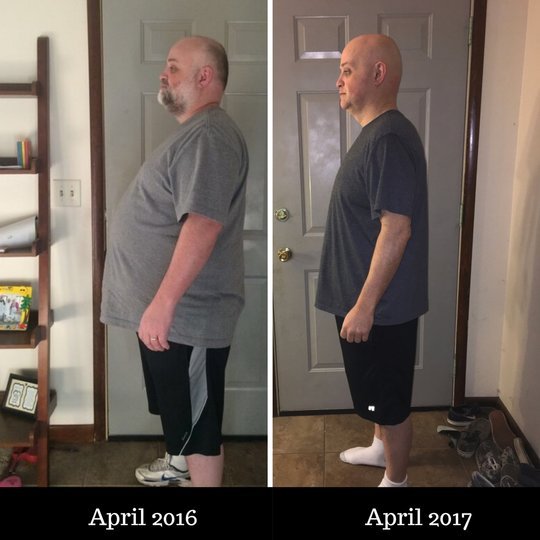
Write it down - One of the best things I did when I started was writing down a game plan and leaving that where I could see it.
When I started, I told myself that I would commit 12 weeks for sure to the Keto diet. I would be strict, and after that, I would analyze the results and decide if I wanted to proceed or go back to a Paleo diet.
On a whiteboard in my office, I wrote this out. I put down my starting weight and the date. Then I marked down each week. Every week I would mark my weight down.
Every time I walked into my office I got this visual look at the journey I was on. When I felt down and didn’t know if I could go on, I would look at this board and either see how far I had come or how little I had to go to get to that 12 weeks.
I still use this whiteboard to write down my weekly weights and any goals I might have coming up. I recommend you get something like this too.
I also started a journal at this time. Not the kind my sisters hid from me as a kid but rather a diet journal. I felt like it was a little “woo woo” but I was desperate, and it seemed like a good idea.
Inside the cover, I wrote down inspirational quotes, goals, and my “why.” This was huge. You have to have a good enough “why” to make this stick. If you “why” for losing weight is so you look good, you’re not going to last on any diet.
You really need to dig deep and explore what losing weight and finally getting healthy is going to do for your life and the lives of your loved ones. Write that down on the front of this journal so you can see it every time you open it.
What did I write in this journal? I wrote each day in the journal for the first 6 months. But I would actually start writing tomorrow’s page the night before. Before I went to bed, I would write down what my goals were for tomorrow.
It might be something as simple as “only eat 2 meals”. I’d also include what I planned on eating tomorrow. What I found is that by planning this the night before, I was less tempted to cheat or not know what I was eating when meal times rolled around. Then at the end of the day, I would just write a paragraph or two on how the day went.
This journal also will provide you with inspiration on how far you have come when you are struggling. Some have said that a personal journal is the best book you will ever read and I’d have to agree.
I also recommend doing this in a physical journal rather than in the cloud. I think you get more out of it and you can place this somewhere you see it every day.
How Do I Get Started?
The ketogenic diet is basically a high fat, low carb, and moderate protein diet. Here is a general guideline for where your calories should come from:
75% - Fat
25% - Protein
5% - Carbohydrates
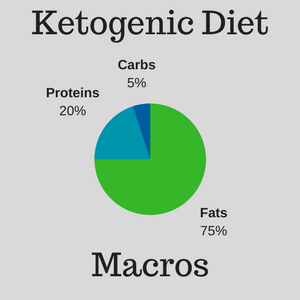
This is just a general guideline, and you can adjust it once you get fat adapted. I’d recommend actually measuring and tracking what you eat for the first week or two to make sure you are close to these numbers.
Use something like MyFitnessPal to track this. Just use these percentages as a guide, not gospel. Limit the carbs to under 20 grams is the most important.
At first, you will find that you will have a hard time getting enough fat. You will adjust. After you become fat adapted you can back off the fat as long as you still feel full. You will be burning your own fat reserves at that point.
Fats
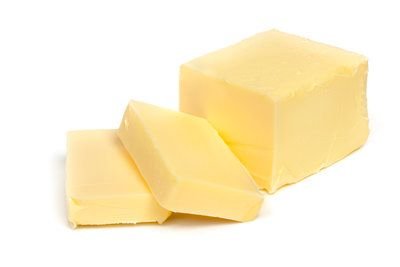
We are going to eat a lot of fat. Lots of delicious fat. It’s going to make up 75% of the calories we eat starting out. Always add extra fat at every meal. If you are getting enough healthy fats, it’s going to help make you feel full and help with carb cravings.
Healthy Fats:
- Coconut Oil (Used refined and you won’t taste any coconut flavor)
- Olive Oil
- Lard
- Real Butter
- Bacon Grease
- Heavy Whipping Cream
- Hard Full Fat Cheese
- Homemade Mayo
- Fatty Cuts of Meat (Bacon, 80/20 hamburger, Ribeye Steak, etc.)
- Avocados
Fats to Avoid:
- Vegetable Oil
- Margarine
- Milk (Lactose is cow sugar basically)
- Any low-fat dairy products.
- Salad Dressings (Most have sugar & ingredients you can’t pronounce)
Sweeteners
I’d recommend avoiding sweeteners and desserts in general when starting out. I know this isn’t popular among most keto dieters, but I really think it helps cut down on the carb cravings. When people say things like, I need something for my “sweet tooth,” what they are really saying is I need a fix for my carb addiction.
I think if more people cut out the artificial sweeteners for say 30 days and slowly added them back in they would have fewer cheat days and just do better overall.
If you feel you really need something, then I’d recommend liquid Stevia products. Don’t use the powdered Stevia because it is mixed with maltodextrin which is carbs.
Proteins
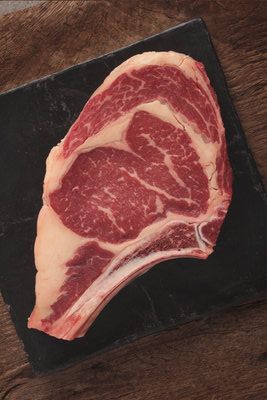
Proteins make up about 25% of the calories you eat each day. A lot of people think of the ketogenic diet as high protein. It’s not. It’s moderate protein. If you eat too much protein, it can turn into glucose in the blood just like carbs.
This gets overblown by many IMO, and I would rather err on the high side of protein because the risks of being too low are definitely well proven. That being said keep in mind it isn’t an unlimited protein diet. Fats are where the majority of your calories will come from each day.
I touched on this earlier, but the fattier proteins are better:
- 80/20 Hamburger
- Ribeye Steaks
- Pork Steaks
- Salmon
- Bacon (watch for sugars)
- Sausage (watch for fillers)
- Skin on Chicken Thighs and Legs
- Whole Eggs
Don’t eat these without adding more fat because they are too lean:
- Boneless Skinless Chicken Breast
- White Fish
- Egg Whites
- Lean pork like chops
- Lean Ground Beef like 93/7
Carbohydrates
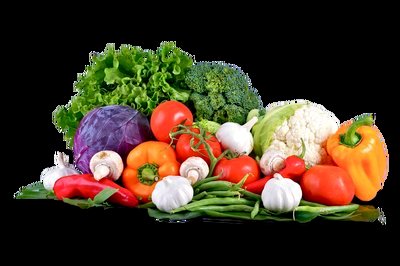
First, you need to understand there is no such thing as an essential carbohydrate. There are essential fats and proteins but not carbs. Get that out of your head.
You could eat zero veggies and be fine. Your body only needs a small amount of glucose a day, and it can produce that in the liver from proteins.
That being said you can have up to 20 grams of carbs a day. It’s debatable whether this is total carbs or net carbs. I tend to be in the total carb camp but it’s a personal preference, and it’s what works for me.
If you prefer to do net carbs, then this is what that means. Just subtract the fiber grams from the total carb grams to get the net. The theory is that fiber is indigestible, so you don’t need to figure it.
For example, a serving of broccoli has 6 total carbs and 2 grams of fiber. In this case, if you were doing net carbs you would only count 4 grams of carbs for the day.
Some even subtract sugar alcohols from the total carbs. I wouldn’t recommend this. This is a marketing ploy by processed food manufacturers, and you will see this in products like bars and treats.
Now onto some carbs to consume:
- Broccoli
- Cauliflower
- Brussel Sprouts
- Green Beans
- Avocados
- Lettuce
- Spinach
- Kale
- Collard Greens
What to expect when starting out
One of the things you will hear about starting the Ketogenic diet is something called “Keto Flu.” You basically feel like crap, hence the name flu. This can vary in severity and duration based on a few things.
First, when you are a carb burner, your body requires a lot of water to use the glycogen stores. When you switch to low carb, your body starts to get rid of these water reserves. This is why you lose a lot of water weight when starting the Keto diet.
The problem is along with this water you lose a lot of sodium. This can lead to things like cramping, brain fog, heart palpitations, and these flu-like symptoms. To combat this, you really need to up your sodium intake. Drinking bone broth and bouillon helps as well.
On the Keto diet, you need lots of good salts like sea salts or Himalayan pink salt. Again this goes against everything you’ve heard on diets in the past, but it does help. Some people also supplement potassium and magnesium.
The second reason for this “Keto Flu” is your level of carb addiction. The addiction is real, and studies have shown that these sugars trigger the same part of the brain as a drug like heroin. If you have consumed lots of carbs and are severely addicted to sugars, then expect your period to be a little worse.
For most people, this period only lasts a few days but some experience it for up to a week. I was fortunate in that I had done paleo in the past and was lower carb than most going in, so I only had a slight headache for the first few days.
Some other things you might experience for a week or two is an overall lack of energy. Your body is adjusting. Hang in there. You are about to come out the other side.
Meals Ideas When Starting Out
When you are first starting out, I recommend eating 3 meals a day with no snacks. The first meal of the day should be carb free as much as possible. This allows your body to have lower blood glucose longer and therefore help with the insulin resistance.
Think bacon and eggs here. Not an omelet with veggies. Save that for your second or 3rd meal of the day. You don’t even have to have a breakfast type meal just as close to zero carb as possible.
I don’t recommend snacks because we want to eliminate the constant eating that we have been told is healthy for us. It’s not. It keeps our glucose up. That and if you are consuming 75-80% fats, you won’t be hungry.
At the same time, I don’t recommend skipping a meal in the first 30 days. Stick to the plan for 30 days while you get fat adapted.
A Few Misc. Things
Intermittent and Extending Fasting - If you around the Keto community, you start to hear how everyone enjoys intermittent fasting and longer fasts. They will tell you about all the benefits, and most of these are true.
However, when first starting out, I don’t recommend it. I feel like these are better once your body is fat adapted. At this point, your body is burning its own fat and won’t feel deprived. Doing it too soon puts your body in a calorie deficit and can slow down your metabolism IMO.
Exercise - A lot of people aren’t going to like this one either but don’t exercise the first 30 days. Most of what the exercise most experts have us doing is stressful on the body, and I don’t recommend it especially during the first 30 days. It produces cortisol in our bodies which require our bodies to hold onto fat.
If you feel like you have to do something, then think walking or riding a bike. These are low impact exercises. Strength training is ok too if you feel you need to lift.
That’s it. After 30 days you will be fat adapted or well on your way. You can start listening to your body more and play around with intermittent fasting and closing your eating window. Your weight will be coming off because you are finally burning your fat reserves.
Congratulations on embarking on this journey of health, good luck, and let me know if I can help in any way!

I have been trying this diet for a few months now but I keep reaching for a chocolate bar or order a pizza. How long does one have to go carb free to defeat that 'sweet tooth'?
For me, it was around that 3-4 month mark. Don't get me wrong the first few months I felt great but it still felt like a diet in a lot of ways. I had to be aware of what I was eating. Then it got the point where I would look up at it was 3 pm and I realized that I hadn't ate yet and I wasn't starving.
The point I knew I had kicked the cravings was when my wife and I went to the state fair. We go several days each year to the state fair really just to eat crap foods. It didn't bother me when she was eating the fried peach, ice cream & pie, etc. That has probably been the greatest thing about this diet is that I now feel more in control. Before it was just a case of holding out until I snapped which I knew was coming at some point.
Some tips would be to avoid sweet foods as much as possible for a while. This includes artificial sweeteners in your coffee, sweet fat bombs, etc. I think too often we make those keto friendly sweet treats and it still keeps the sweet tooth going. Hope that helped and keep at it, it will happen.
I've been on keto for 7 weeks now. Ive never had such good energy levels. It was initally for weightloss but I'm thinking of doing it all the time with an occasional carb up. Great article! Keep up the good work.
I think that's a great idea and probably what I will do once I'm down to my goal weight. Do more of a paleo style mixed in with periods of ketosis and even fasting. Thanks for commenting.
First of all great post and great progress. I'm also into keto and I have a few tips. You mention to eat lots of fat, well in my opinion the less fat you eat the more fat gets taken from your body so better results. The main criteria for keto is carb limiting. I'm speaking from my point of view and what worked for me so while carbs are not essential I've been doing carb refeed days when the progress slowed down a refeed jump started the process again. That carb load helped me put on muscle because of the insulin spike and the growth hormone(it rises on keto) combination. It's kind of like a cheat day but it's good for you(well in this case me). I also do IF (intermittent fasting) and it really goes with the keto lifestyle. All the cravings are gone, I almost don't feel hunger and i'm always energetic. But anyway really enjoyed your post and i'm gonna follow you. Good luck on your journey :)
Thanks for the comment and I agree on limiting the fats. But starting off I wouldn't. The fat really helps get over the cravings for carbs. Anytime I have cravings it's usually because I haven't been getting enough fat. But I no longer try to hit that 75% fat each day. I'm fine with only 50% and letting it use my stored fat instead.
I'm afraid to do carb up days because I feel like that's a good way for me to go off track. But everyone is different and if you can handle that then great. I do think it's good to change things up when you can to keep your body guessing.
Thanks for the info!
You're welcome. Thank you for commenting and let me know if I can help.
looks like a pretty yummy diet to me.
Yes it is. Thanks for the comment.
I drink a lot of water to counter the ketoflu. Btw, just made a fatbomb recipe if you want to check it out: https://steemit.com/food/@feedroh/bacon-eggs-avocado-bowl-or-fat-bomb-keto-recipe
Yes plenty of water and I add in sea salt or pink himalayn if I'm doing something like a fast. It helps. Thanks for the comment and I will check out your article.
I love eating Keto!
Upvoted and Resteemed!😃
Thank you. Me too.
Looks delicious! I am hungry now
@kam.ila
Thank you for the comment.
reSteemed
What is most impressive about your story is that your After picture is a full year later. Bravo :)
Thank you. Yes, there is a nice difference in those pictures.